Sustainable meaning, anything that has the ability to stay for years. Sustainability in construction refers to using methods that support, secure, and positively impact the environment.
“From this corona pandemic, humans should understand how nature has justified itself and took control over humans’ unwise use of resources and thereby affecting the environment negatively .” We have seen that lesser CO2 emissions and reduction of construction waste have turned the air and land to cleaner than before and reduced the level of pollution.
The construction industry plays a vital role in affecting the environment both positively and negatively. The choice always lies in the hands of architects, interior designers, stakeholders, builders, etc., to design for the betterment of human health and environmental health.
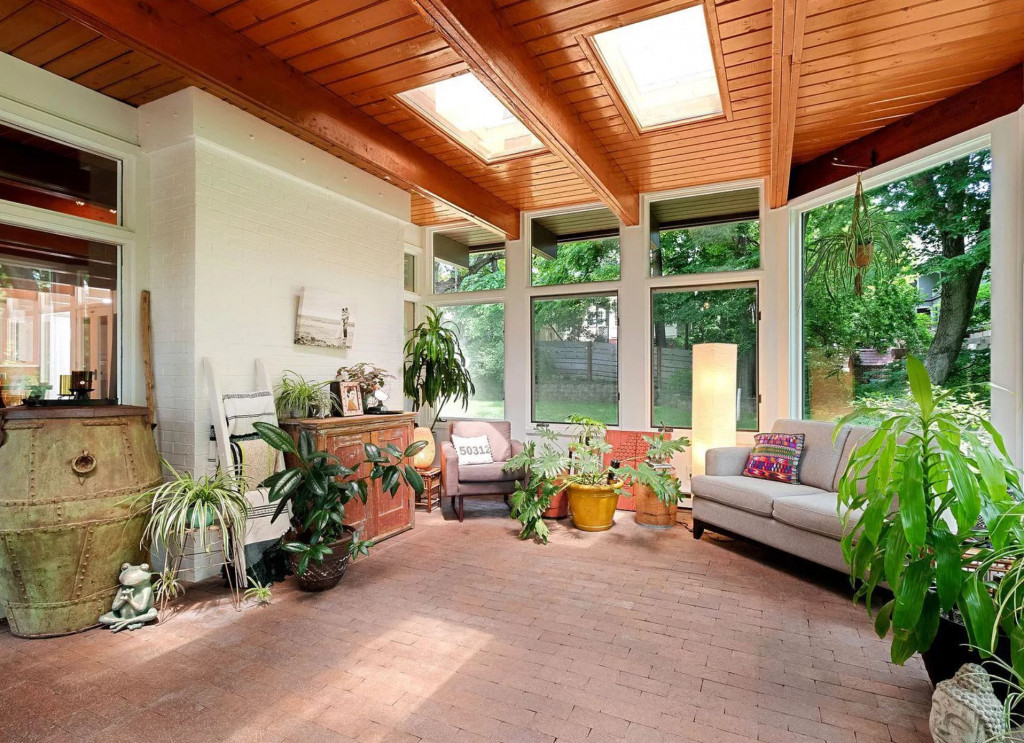
The sustainable and eco-friendly choice now is the future for the construction industry, supporting lives positively and holistically of nature and humans. Starting from building urban project, buildings, etc, this approach of building sustainably has been referred to as “Green building” construction, wherein we need to be clear about these two words specifically because,
“Every sustainable building can be green but not every green building is sustainable.”
The importance of sustainability lies in the “future” factors, which set a higher standard than those used to define a green building. So, we will have a look on our traditional approach and calling a need for sustainability in every aspect of design now and for the future.
“Every conscious and thoughtful choice of designers at every step is considered important and contribute to humane and nature health “
Definition: “Green building design includes the use of renewable energy sources such as wind, water or solar, creating a healthy indoor environment, implementing natural ventilation systems, and using construction materials that minimize the use of volatile organic compounds(VOCs) in the home.
The use of building materials and resources that are sustainable, have low embodied energy, and produce a minimal environmental impact are key elements in green construction. For instance, the efficient use of water by appliances, faucets and showerheads, the recycling of greywater, and the reuse of rainwater from landscaping and other non-potable purposes.
Shortly, there are number of features to building “green” that includes
1)Efficient use of energy
2)Use of renewable energy
3)Reduction measure for pollution and waste, enabling reuse and recycling.
4)Good indoor environmental air quality
5)Use of building materials that are non-toxic, ethical and sustainable.
So, buildings that are built keeping in mind all the necessary features for green buildings are rated under IGBC (i.e. Indian green building council)
Case Study : Development Alternatives, Delhi
LEED certified , Green rated building
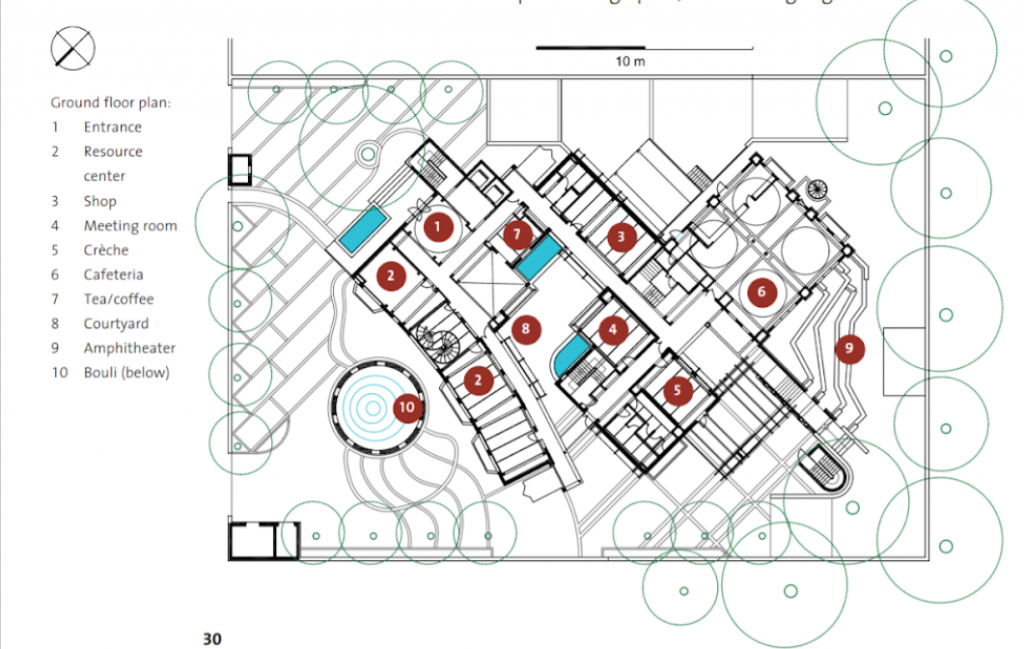
Look at the zones and placement of all spaces – every space exposes to natural sunlight making best use of renewable energy, reducing less use of interior lights in daytime.
Refer these images to see the building interior spaces.
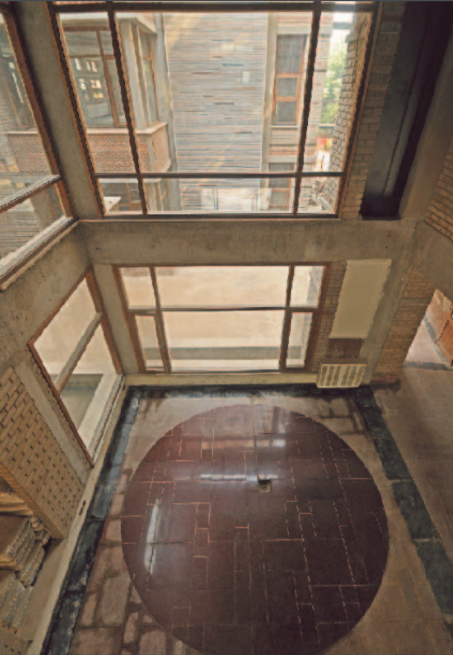
The Lobby Space – 2 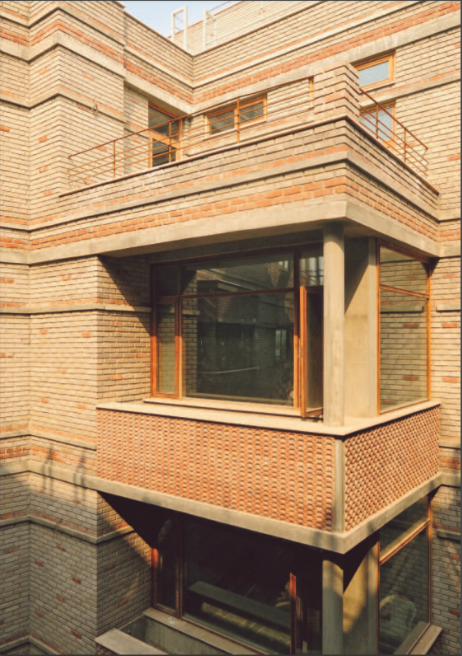
Huge Window Openings in Courtyard
The ventilating technique used reduces the use of air conditioning and creating cool passive air. Windows facing east and west are kept shaded by sunscreen or by building volume itself. This eliminates the brunt of the morning and afternoon sun. Windows are meticulously designed with three different layers hence, they filter the daylight. The greenery around the building envelope makes the air fresh and keeps the interior environment cool reducing the active cooling load.
Sustainability in Interior Design
Sustainable interior design includes products, fabrics, adhesive, etc that are environment-friendly. These are some key factors to keep in mind while choosing any material.
Properties of Eco-Friendly materials:-
1) They should have very less CO2 emissions.
2) They should possess the maximum potential for reuse or resource recovery.
3) They should be locally available that are extracted, manufactured, and transported from nearby places so in to promote both the vernacular material and sustaining the legacy of its society and culture of that place.
4) Reduction in air, land, and water pollution – using material with low VOC emissions. e.g. eco friendly paints.
5) Biodegradable.
How to identify if the product is eco-friendly/ green/ sustainable?
Here are some sustainable interior design elements and ways to identify it.
| Elements | Sustainability Certification |
| Wood | FSC |
| Paints | EPA, CPG, GPC |
| Apparel/Fabric | BCI, GOTS, OE-100, SAAS, etc |
3 Theories to Design a Sustainable Interior Space:
(1) Designing for Health of People Occupying the Space
Biophilic design is an approach to architecture that seeks to connect occupants more closely to nature. Such buildings incorporate things like natural lighting, ventilation, natural landscape features, and other elements. Maximizing natural light benefits the occupant’s energy bills, but biophilic interventions incorporate natural lighting from diffusion to temporal changes. A lighting system that either naturally or artificially changes throughout the day to mimic our circadian rhythm keeps us on track with our natural 24-hour cycle. Also, it enhances visual comfort with outside nature.
(2) Theory of Designing for Energy Efficiency
With efficient use of color, fabrics, window size, and quality, we can reduce the energy input for interior space. For example, to save energy spent on lighting, pick light colors. Lighter colors reflect more light, while rooms with darker walls and furnishing need more artificial lighting. Using reflective surfaces increases the amount of light in a room by bouncing it around. This decreases the dependency on artificial lighting.

In addition to that, window coverings, blinds, and shades enable residents to control the building’s temperature in an energy-efficient way by opening and shutting them as needed. Carpets are excellent thermal insulators; according to estimations, a carpet retains as much as 10% of a room’s heat.
(3) Theory of Adaptive Reuse
Instead of discarding ‘old-fashioned’ objects while they are still functional, designers shall come up with creative ways to give them a new life. Another way to reduce the depletion of natural resources (and divert waste from landfills) is by opting for synthetic materials that were made from recycled waste or can be renewed/recycled at the end of their life cycle. With this cradle-to-cradle approach, waste becomes the raw material for new products and a circular loop of manufacturing is formed, effectively minimizing or even eliminating waste altogether.
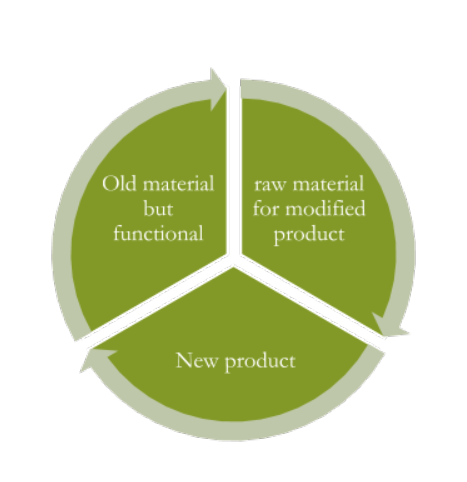
Let’s take a look at Bardari Palace, Jaipur; here, the paintings are kept as they were before. Only the lighting and furniture has changed accordingly.
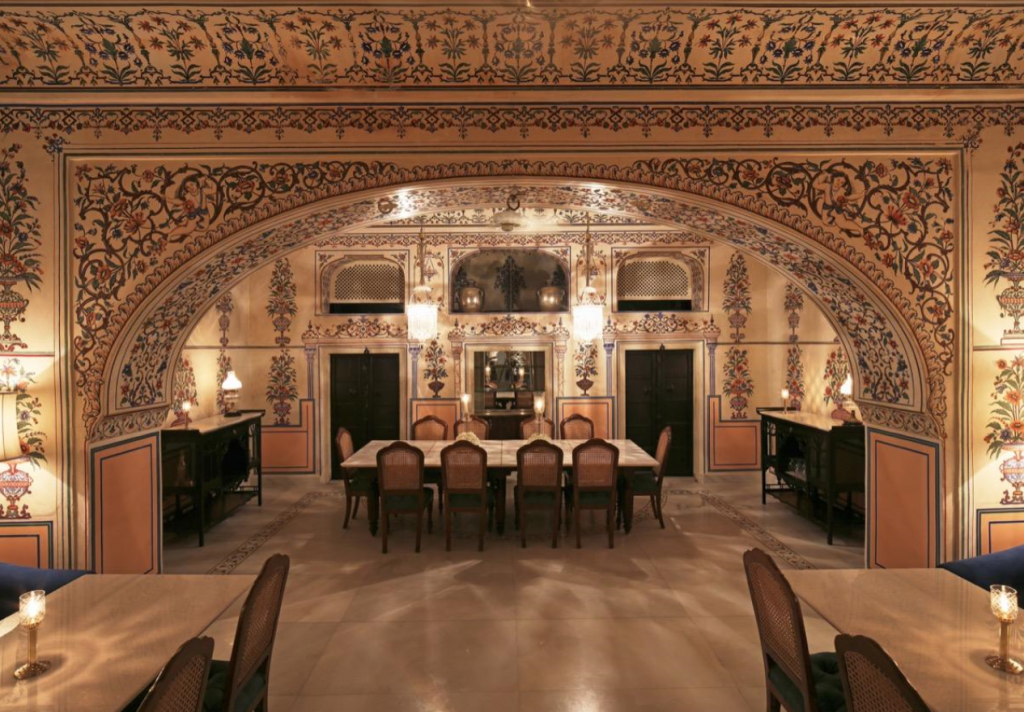
The old interior is not demolished and it is reused as a backdrop for new space of contemporary times. This showcases the smart use of recycling and the reduction of construction waste.
Here’s the transformed view of courtyard of palace into café.
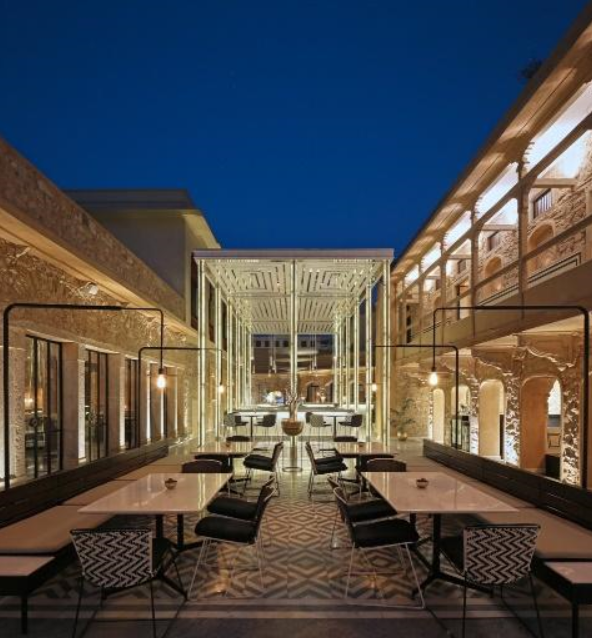
The style is industrial amidst a traditional setup. The furniture fabrics used are simple easily available and dynamic flooring compliments the chairs. The use of materials like this helps in building sustainability.
Ultimately, we can sustain ourselves, only if we can sustain nature and its belongings.
By being aware, alert, and thoughtful, each fraternity can bring in the positive, powerful, and happy change in everyone’s life, which includes the life of voiceless creatures, plants, water. Sustainability in construction is thinking holistically for everyone, and bring in the kindness in heart and soul.
We build not only homes but also contribute to planet on larger scale. Please share your thoughts below.

